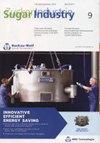International competitiveness of value chains for sugar beet and sugarcane: a combined approach to estimate production and processing costs in Brazil and Germany
IF 0.2
4区 农林科学
Q4 FOOD SCIENCE & TECHNOLOGY
引用次数: 1
Abstract
With the liberalization of the European sugar sector, the industry is free to export sugar to the world market, competing with other sugarcane producing countries. To understand competitiveness, it is imperative to compare total production costs, including both raw material (farm) and processing costs (mill). Therefore, farmlevel production costs from agri benchmark combined with an engineering approach to calculate processing costs were merged to calculate sugar production costs in Germany and Brazil. The necessary data related to investment costs and technical coefficients was obtained in collaboration with BMA. Results show that processing one ton of white sugar (excluding raw material costs) from sugarcane in Brazil is more than USD30/t cheaper than processing sugar beet in Germany. Including raw material costs and the sales of byproducts, white sugar production in Brazil has a total cost advantage of USD112/t over German factories. Key differences in production costs are associated with labor (20%), depreciation (20%) and energy costs (40%). The findings indicate that even with equivalent raw material costs, the lower net processing costs are a major competitive advantage for Brazilian sugar producers. The combination of the typical farm approach and the dynamic engineering model can be applied to other regions, allowing for the estimation of regional production and shifts in global sugar supply.甜菜和甘蔗价值链的国际竞争力:估算巴西和德国生产和加工成本的综合方法
随着欧洲糖业的自由化,该行业可以自由地向世界市场出口糖,与其他甘蔗生产国竞争。为了了解竞争力,必须比较总生产成本,包括原材料(农场)和加工成本(工厂)。因此,德国和巴西将农业基准的农场生产成本与计算加工成本的工程方法相结合,来计算糖的生产成本。与BMA合作获得了有关投资成本和技术系数的必要数据。结果表明,在巴西加工1吨甘蔗白糖(不包括原材料成本)比在德国加工甜菜便宜30多美元/吨。包括原材料成本和副产品销售在内,巴西白糖生产比德国工厂的总成本优势为112美元/吨。生产成本的主要差异与劳动力(20%)、折旧(20%)和能源成本(40%)有关。研究结果表明,即使在原材料成本相等的情况下,较低的净加工成本是巴西糖生产商的主要竞争优势。典型农场方法和动态工程模型的结合可以应用于其他地区,从而可以估计区域生产和全球糖供应的变化。
本文章由计算机程序翻译,如有差异,请以英文原文为准。
求助全文
约1分钟内获得全文
求助全文
来源期刊

Sugar Industry-Zuckerindustrie
工程技术-食品科技
CiteScore
0.50
自引率
50.00%
发文量
22
审稿时长
18-36 weeks
期刊介绍:
Sugar Industry / Zuckerindustrie accepts original papers (research reports), review articles, and short communications on all the aspects implied by the journals title and subtitle.
 求助内容:
求助内容: 应助结果提醒方式:
应助结果提醒方式:


